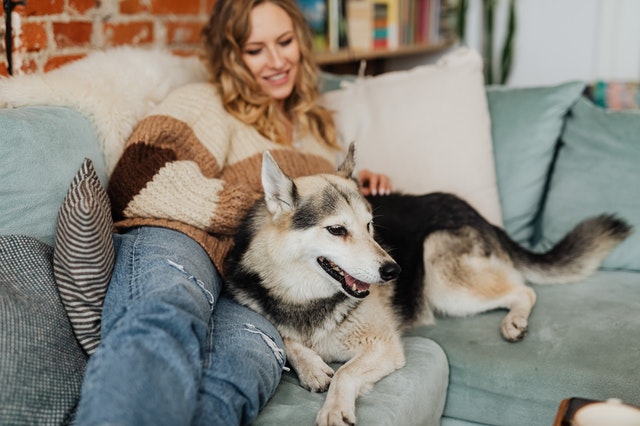Learn the signs of a dog with fleas and how to determine whether your dog has skin parasites.
“How can I identify if my dog has fleas?” Unfortunately, many dog owners miss the signs that their dog has fleas, especially if there is mold in the house. Instead, learn to spot indicators that a dog has fleas, such as the appearance of flea filth, itching, scabs, and even illnesses.
What is the Debris in My Dog’s Fur? — Identifying Flea Dirt
Flea filth is a telltale indication that a dog has fleas. Flea dirt is, as mentioned, flea feces. The soil looks black and gives the animal’s fur a rough texture. Flea dirt is often discovered on the pet’s lower back, towards the base of the tail.
Because fleas feed on their hosts’ blood, the predominant component of this gritty detritus is blood. Place a few flea dirt particles on a moist paper towel and wait roughly five minutes to identify them. The sand-sized particles will partly dissolve on the damp paper towel, producing blood-red stains.
Flea Infestations as the Cause of Itchy Skin, Scabs, and Red Bumps on a Dog:
Flea infestations are a typical cause of a dog’s skin issues, such as itchy skin and frequent scratching, scabs, red lumps, small regions of hair loss, and skin peeling (particularly around the red spots).
Flea-infested dogs often develop scabs. They are caused by mild skin infections (when bacteria enter the flea bite’s small incision) and itching.
Flea bites may cause skin infections and hot patches, especially in dogs with a weakened or suppressed immune system, because fleas tear the skin when they bite, and the pet might further damage the skin by scratching. Due to the drug’s adverse effect of suppressing the immune system, prednisone-treated dogs often develop skin conditions such as staph infections. Combining the damaging effects of prednisone with flea bites may lead the dog to develop persistent skin infections and hot areas.
Additionally, some dogs are allergic to flea bites. It may cause very itchy skin, hives, swollen and raised red lumps, and possibly a potentially fatal illness called anaphylactic shock. The signs of anaphylaxis in dogs include face swelling, trouble breathing, panting and salivation, pale gums, vomiting, and rapid diarrhea.
How to Locate Fleas on Your Dog’s Fur
Fleas are dark brown and about the size of a pinhead. Fleas tend to hurry, making locating them in your dog’s hair difficult. Searching for flea dirt or telltale skin disorders in dogs with parasites is often much more straightforward.
Start the search by inspecting the dog’s chest and belly, where the hair is often thinner in many breeds. Fleas are often apparent when they scamper over the dog’s skin. The red lumps, and flea bites, will also be more noticeable on the breast and bottom.
Examine the dog’s back, beginning at the base of the tail and going toward the head. Next, move your hand through the dog’s fur in the opposite direction of the hair growth to “ruffle” the pile. Moving your fingers through the dog’s fur will reveal the skin’s surface.
Next, examine the pet’s coat for fast-moving specks.
Fleas and flea filth may also be located using a fine-tooth comb. Comb the dog’s hair and inspect the base of the comb’s teeth for fleas. Fleas are often seen leaping off the comb.
Alternately, use a slicker brush to brush your dog from the base of his neck to the bottom of his tail. After many strokes, cease contacting and observe the dog’s hair for movement. Working in a well-lit area, repeat the procedure many times. The brush tends to force fleas to the base of the dog’s tail, where they may be seen wandering around. Fleas on a black dog will be reddish-brown. On dogs of all other colors, fleas will appear black. This method is more successful on short-haired dogs.
Usually, flea dirt is sufficient evidence of an infestation. However, depending on the length and density of the dog’s hair and the severity of the illness, you may or may not find real fleas. In addition, you may not see the typical skin issues linked with fleas in rare instances. In brief, if you see flea dirt, you should treat your dog for skin parasites.
Fleas may infest indoor cats and dogs. A pet does not necessarily need to be outside to get parasites. Their eggs may be transferred from your clothes to your dog’s coat. Your pet may get fleas via casual contact with an afflicted dog or cat.
If your dog has fleas, immediate treatment is necessary. Fleas may cause infections, persistent skin issues, and even anemia. Are you curious about the secret to treating fleas on a dog? It would be helpful if you treated both the dog and the surroundings, including pet beds, carpets, bedding, and furniture.

